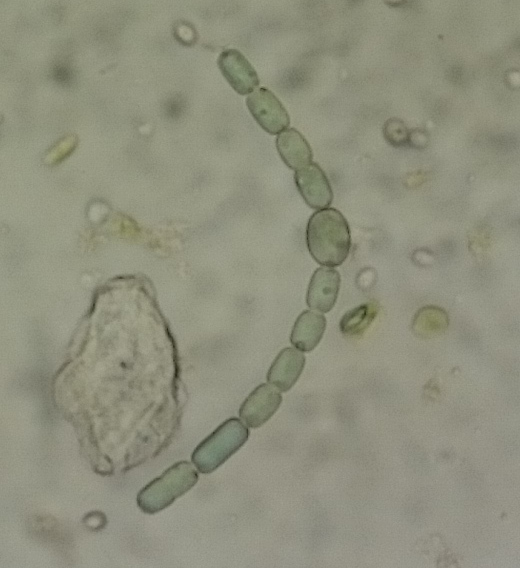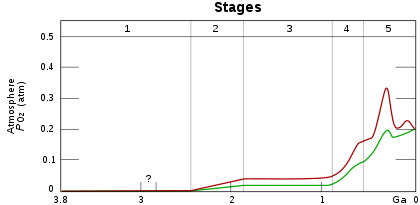The primordial atmosphere of the earth didn’t contain Oxygen (O2). The atmosphere was a “reducing atmosphere”, the exact opposite of today’s “oxidizing atmosphere”.
Somewhere along the line life evolved. Single-celled organisms. Weirdos by today’s standards. Methanogens and sulfate-reducing microorganisms. That was just life for a couple billion years.
And then chlorophyll evolved.
Chlorophyll changes everything.

Photo: By Atriplex82 – Own work, CC BY-SA 4.0, https://commons.wikimedia.org/w/index.php?curid=45516370
Chlorophyll, along with its associated proteins, absorbs the red end of the light spectrum (reflecting away yellow and blue which together make green) and it uses this absorbed energy to rip electrons away from Oxygen. Chlorophyll performs the opposite reaction of oxidation, which you can read about in A Very General Intro to Oxidation . Chlorophyll drives a reaction that looks like this:
Carbon Dioxide + Water + Light Energy —> Hydrocarbons + Oxygen
In this reaction, chlorophyll uses the energy from the absorbed light to reduce (the opposite of oxidize) the carbon and hydrogen from carbon dioxide and water into a hydrocarbon. The oxygen from the water and carbon dioxide is oxidized (that’s right, believe it or not) into O2, atmospheric oxygen.
The really useful thing about this reaction, of course, is that it turns sunlight into stored energy in the forms of sugar, starch and fat. But the potential downside is extraordinary. Molecular oxygen is highly reactive. It would really like its electrons back. It causes fire. And rust. And occasional tornadoes of fire.

File borrowed from Heinrich D. Holland under the Attribution-ShareAlike 3.0 Unported license.
Oxygen totally altered which species could live in the atmosphere. Oxygen is very corrosive, many early life forms had no defense for it. Species called “obligate anaerobes” – species without an antioxidant defense system who can’t live in the presence of Oxygen – were forced to the periphery, living in bogs or in bowels. Those of us who live here now have developed potent antioxidant defense systems.
Interestingly enough, evolution learned to use superoxide (which is like Oxygen on steroids) as a powerful tool. It is used as a signalling compound, in immune defense, and to control the cell cycle. In fact superoxide is the topic of the next entry.
